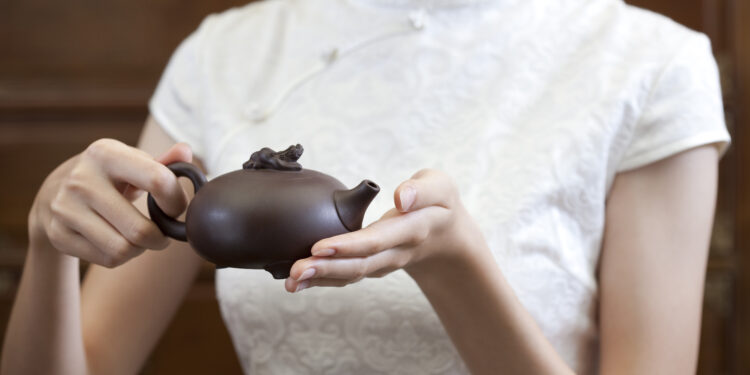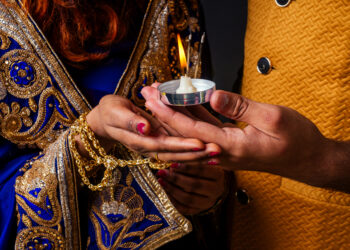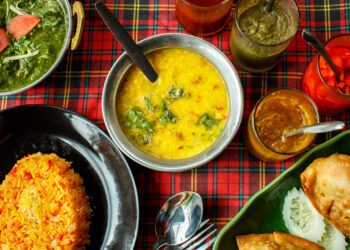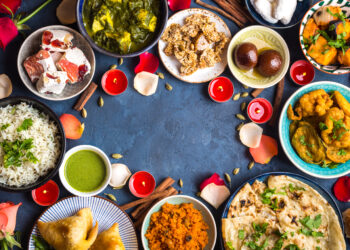Imagine a world where each sip of tea transports you to a realm of tranquility and tradition. Welcome to the fascinating universe of Chinese tea ceremonies. These ancient practices, steeped in culture and history, are not just about brewing a perfect cup of tea. Instead, they’re rich rituals that celebrate harmony, formality, and mindfulness. Intrigued by how something so simple can be so profound? Whether you’re a tea enthusiast or just curious about cultural traditions, there’s a lot to discover in this aromatic journey. Grab a cup of your favorite brew and let’s dive deeper!
Exploring the Essence of Chinese Tea Ceremonies
Chinese tea ceremonies are traditional Chinese cultural practices that focus on the preparation, presentation, and consumption of tea—a cornerstone of China’s heritage. Rooted in ancient customs, these ceremonies highlight not just the fragrance and flavor of tea but also its ability to encourage harmony and mindfulness in those who partake. Unlike a quick cup of tea, a Chinese tea ceremony is a contemplative art form. It’s about more than tea; it’s about creating an atmosphere of respect and tranquility. Typically, this involves using specific utensils, like a gaiwan or teapot, and following precise brewing methods that enhance the tea’s characteristics. As such, these ceremonies serve as a bridge between nature and humanity, fostering a peaceful communal sharing that extends beyond the simple act of drinking tea.
The Historic Charm of Chinese Tea Ceremonies
Chinese tea ceremonies have a rich history steeped in tradition and culture. The history of Chinese tea ceremonies dates back thousands of years, tracing its roots to the Tang dynasty (618-907 AD) when tea became widely popular across China. Tea culture flourished even more during the Song Dynasty, where it became an emblem of sophistication and scholarly life. By the Ming Dynasty, loose leaf tea steeping was favored, highlighting both simplicity and flavor. Today, the ceremony reflects centuries of evolution, aiming to cultivate peace and harmony.
Originally linked to Buddhist monks who appreciated tea’s ability to aid meditation, these ceremonies evolved over time. By the Song dynasty, the art of tea preparation and appreciation reached new heights, and elaborate rituals were established. These ceremonies emphasized the aesthetics and spiritual aspects of tea drinking, transforming it into a cultural practice deeply embedded in Chinese society. As centuries passed, each region in China developed distinct styles and methods of performing tea ceremonies, contributing to a rich tapestry of tradition celebrated even today.
Exploring the Essence and Rituals of Chinese Tea Ceremonies
If you’ve ever been curious about how to host a Chinese tea ceremony yourself, here’s a simple recipe to guide you through this delightful cultural ritual. Let’s dive right in!
Ingredients
– Green tea leaves (or your choice of oolong or black tea)
– Hot water (heated, not boiling, around 80-90°C for green tea)
– Tea set (including a teapot, fairness pitcher, and small tasting cups)
– A small tray for catching spills
Instructions
– Prepare your setup: Arrange your tea set on a tray, ensuring the teapot, fairness pitcher, and cups are clean and dry.
– Warm your teapot: Pour hot water into the teapot to warm it up, then pour the water out. This helps the tea maintain its temperature during brewing.
– Add tea leaves: Place a generous amount of tea leaves into the teapot. For a stronger brew, use more leaves.
– Rinse the leaves: Pour hot water over the leaves, swirl gently, then discard it. This step awakens the leaves and cleans them of dust.
– Steep the tea: Fill the teapot with hot water again and let the tea steep for about 30 seconds to a minute, depending on your preference.
– Pour into the fairness pitcher: Once steeped, pour the tea into the fairness pitcher. This allows you to ensure each cup you serve has the same taste.
– Serve and enjoy: Finally, pour the tea from the fairness pitcher into tasting cups. Offer it to your guests, inviting them to savour the aroma and flavour.
The Timeless Benefits of Tea Ceremonies
– A Journey of Mindfulness: Participating in Chinese tea ceremonies offers a path to mindfulness. These ceremonies emphasize being present, which helps reduce stress and increase awareness in daily life.
– Cultural Insights: Engaging in these rituals provides a deeper understanding of Chinese traditions and values. You get a glimpse into centuries-old practices that have been passed down through generations.
– Health Benefits: Beyond the ceremonial value, the teas themselves, often rich in antioxidants, help improve digestion, boost immunity, and promote relaxation.
– Enhancing Social Bonds: Gathering for a tea ceremony fosters a sense of community and connection. It’s an opportunity to share stories, ideas, and experiences with friends and family.
– Appreciation of Aesthetics: The meticulous preparation and beautiful presentation of the tea ceremony enhance one’s appreciation for aesthetics and the art of tea-making. Every step is like a dance, a performance that pleases both the eye and the spirit.
– Personal Reflection and Growth: The calm environment of a tea ceremony encourages introspection. It’s a moment to pause and reflect, which can lead to personal growth and a clearer mind.
Incorporating elements of Chinese tea ceremonies into your life isn’t just about enjoying a good cup of tea. It’s about experiencing calmness, appreciation, and togetherness, aspects that are beneficial in today’s fast-paced world.
How to Incorporate Chinese Tea Ceremonies in Daily Life
– Understand the Basics: Before diving into a Chinese tea ceremony, get to know different types of Chinese teas like green, black, oolong, and pu-erh. Familiarize yourself with their unique flavors and health benefits.
– Choose Quality Tea: Quality plays a significant role in the taste. Opt for loose-leaf tea rather than tea bags, as they generally offer richer flavors and aromas.
– Invest in Proper Teaware: Acquire a traditional Chinese tea set, which typically includes a gaiwan, a small teapot, and tiny cups. These are essential for an authentic experience.
– Master the Steps: Practice the specific steps of a tea ceremony—washing the leaves, the initial rinse, brewing, and serving. Each step has its importance in enhancing flavor profiles.
– Practice Patience: Brewing tea in a traditional manner isn’t rushed. Take your time to learn and perform each step carefully, appreciating the slow and meditative nature of the process.
– Mind the Water Temperature: The right water temperature can make or break your tea. Generally, use cooler water for green teas and hotter for black teas, but specifics vary, so do a bit of research.
– Engage Your Guests: Tea ceremonies are as much about community as they are about tea. Engage with your guests, share stories, and create a welcoming environment where everyone can relax and enjoy.
– Appreciate the Aesthetics: Pay attention to the aesthetics of the presentation. Arrange your teaware beautifully and savor the ritual not just as a taste experience but as a visual and sensory one too.
– Explore Cultural Contexts: Learn about the history and cultural significance of tea ceremonies in different Chinese regions. It adds depth to the practice and enriches your experience.
– Stay Open to Experimentation: Don’t fear to experiment with different teas, steeping times, and techniques to discover what suits you best.
Discover Perfect Spots for Traditional Chinese Tea Ceremonies
Exploring Chinese tea ceremonies can be an enriching experience for those stepping into this world brimming with tradition and flavour. With a captivating blend of elegance and precision, tea ceremonies offer insight into Chinese culture and hospitality. If you’re wondering where to witness and indulge in these beautiful ceremonies, here’s a shortlist of places you should explore.
Beijing, China
– Lao She Teahouse: Famous for offering an immersive cultural experience, this teahouse not only serves exquisite teas but also features traditional performances.
– Imperial Tea House: Situated within Beihai Park, it provides a serene environment to enjoy tea the traditional way.
Shanghai, China
– Huxinting Teahouse: This teahouse is a window into China’s past with its classical architecture and tranquil atmosphere.
Hong Kong, China
– Lock Cha Tea House: Located within the Hong Kong Park, it’s perfect for savoring dim sum paired with a variety of Chinese teas.
Taipei, Taiwan
– Wisteria Tea House: Renowned for its peaceful setting, visitors can enjoy guided experiences into the art of tea-making.
London, United Kingdom
– Twinings Tea House: Offers a selection of Chinese teas and occasional workshops on tea ceremonies.
These places provide not only the opportunity to drink tea but to truly appreciate the rich history and artistry associated with Chinese tea ceremonies. Each spot promises to steep you in stories, flavours, and traditions you’ll remember long after your visit.
Conclusion
Have you ever experienced the art of tea beyond the cup? Chinese tea ceremonies offer more than just a drink—they’re a serene escape from the chaos of everyday life and a celebration of culture and connection. Much like cherished culinary traditions, these ceremonies bring people together, transforming tea into a shared experience. Each ceremony unfolds with a unique rhythm, following precise steps that elevate the flavor and aroma of the tea to new heights.
If you’re intrigued by Chinese tea ceremonies and other fascinating food traditions, there are plenty of resources where you can learn more. One way to explore is by participating in local events or online forums where food enthusiasts gather to share knowledge and experiences. It’s an exciting way of building a community and discovering new tastes and cultures.
In conclusion, the journey through global cuisines is both educational and enjoyable. We’ve touched upon the importance of fresh ingredients, spices, simple recipes, and the cultural significance of food traditions like the ethereal Chinese tea ceremonies. As you explore the culinary world, remember that it’s not just about the food but the stories and people behind it all. Dive deeper into cuisines with resources like those provided by Currybien to enrich your experience. Have fun experimenting and sharing your newfound knowledge with others. Let’s keep the conversation going!




















